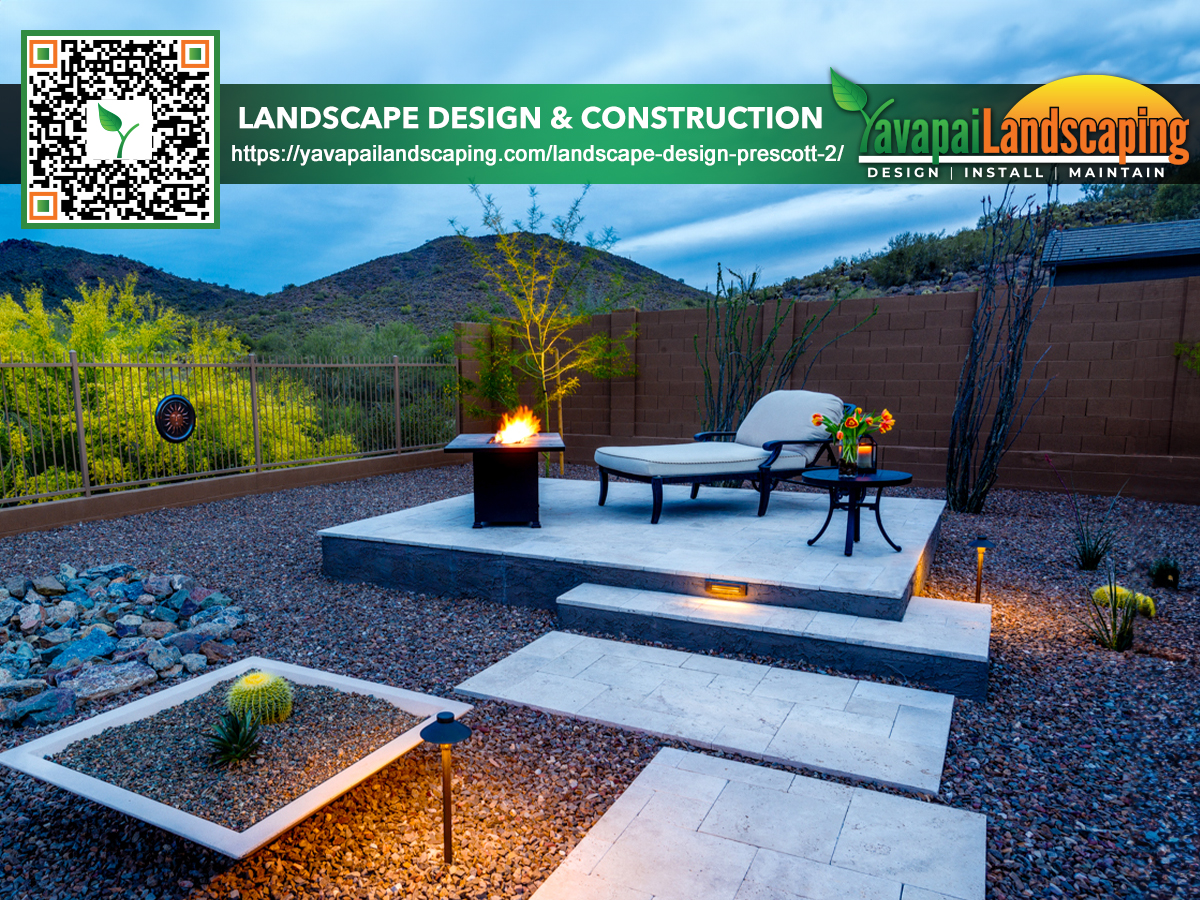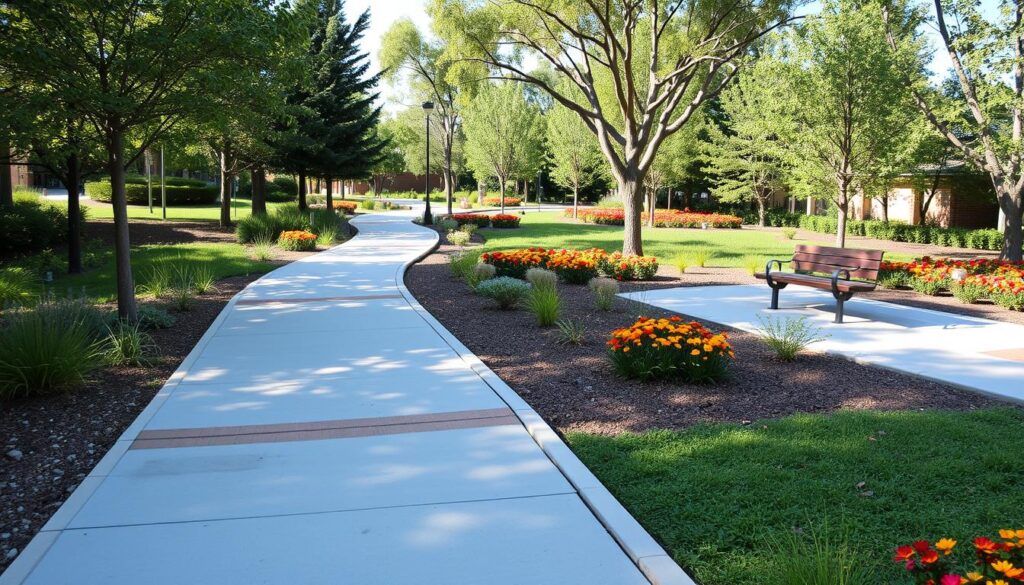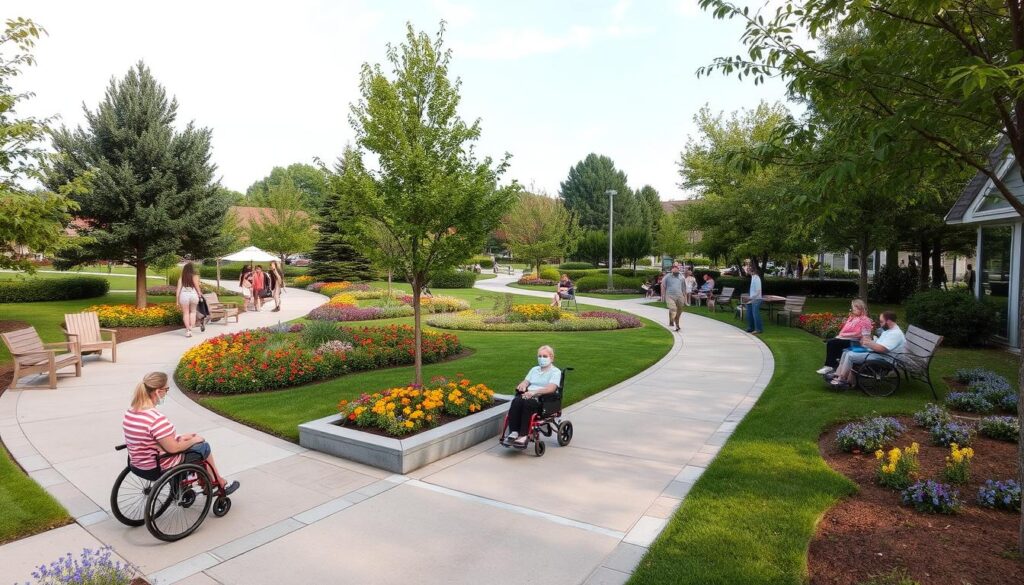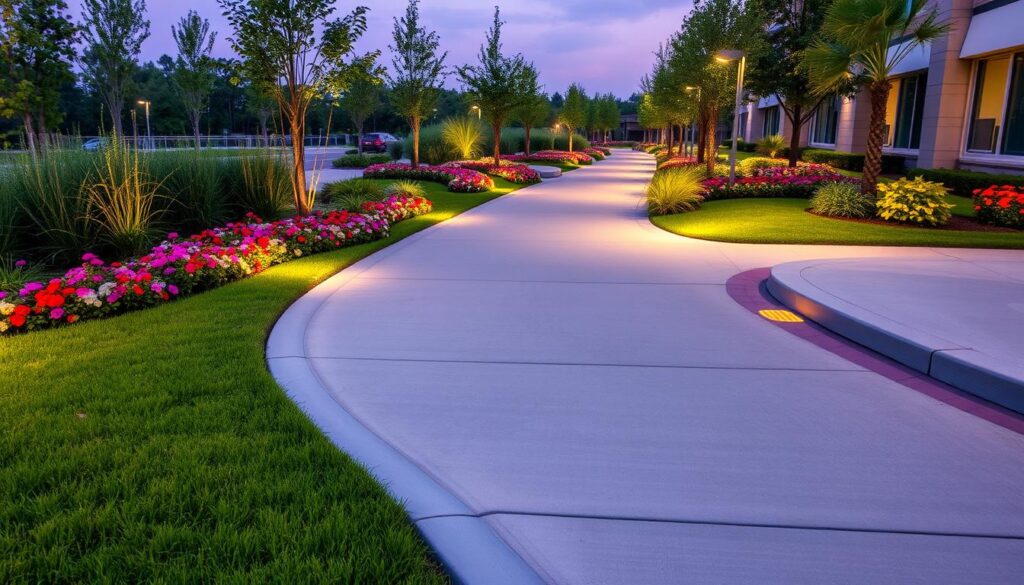
Creating inclusive outdoor spaces is key in modern landscape design. Safe and accessible walkways are crucial for everyone to enjoy outdoor areas. By focusing on accessibility and universal design, we can make environments welcoming to all.
ADA compliance is more than a legal rule; it promises inclusivity. When designing walkways, consider the needs of those with mobility issues, visual impairments, and other challenges. This not only boosts safety but also improves the experience for everyone.
Universal design in your landscape projects is more than just following rules. It makes spaces functional, beautiful, and adaptable over time. By prioritizing accessibility, you’ll create outdoor areas that welcome everyone.
Key Takeaways
- Inclusive outdoor spaces benefit all users
- ADA compliance is essential for legal and ethical reasons
- Universal design principles enhance functionality and aesthetics
- Accessible walkways improve safety for everyone
- Landscape accessibility should be a priority from the design phase

Understanding the Importance of Accessible Walkways
Creating spaces that everyone can enjoy is key. Accessible walkways are essential for this. They bring many benefits to both property owners and users.
Benefits of Inclusive Landscape Design
Inclusive design makes outdoor areas for everyone. It makes spaces safer, encourages people to interact, and boosts physical activity. It helps the elderly, parents with strollers, and those with injuries.
Legal Requirements and ADA Compliance
Following ADA guidelines is more than a law. It’s a promise of inclusivity. These rules cover walkway slope, width, and texture. Following them makes spaces open to all and avoids legal troubles.

Enhancing Property Value and Aesthetics
Accessible walkways make outdoor areas more valuable. They look good and work well. This mix of beauty and function attracts buyers or renters, raising property value.
- Increased usability for all individuals
- Improved safety and reduced liability risks
- Enhanced aesthetic appeal of the property
- Greater marketability and potential for higher property values
By focusing on accessible walkways, owners create welcoming spaces. These spaces meet legal standards and increase property value. Unlock new knowledge by reading this remarkable piece.
Key Elements of Safe Walkway Design
Creating safe walkways involves several crucial elements. Walkway safety features are vital in preventing accidents and ensuring user accessibility. Let’s explore these key components.
Slip-resistant surfaces are essential for safe walkways. These materials provide traction, reducing the risk of falls in wet or icy conditions. Options include textured concrete, rubber tiles, and specially coated pavers.
Proper drainage is another critical aspect of safe walkway design. Effective drainage systems prevent water accumulation, leading to slippery surfaces and deterioration of materials. Sloped surfaces and strategically placed drains help channel water away from walkways.
A clear path of travel is crucial for walkway safety. This means:
- Removing obstacles and tripping hazards
- Maintaining even surfaces
- Providing adequate lighting
- Installing handrails where necessary

The walkway width accommodates various users, including those with mobility aids. A minimum width of 36 inches ensures comfortable passage for most individuals. Well-defined edges help guide users and prevent accidental steps off the path.
By incorporating these elements, landscape designers can create walkways that are not only safe but also accessible and enjoyable for all users.
Choosing the Right Materials for Durability and Safety
Choosing the right materials for your walkways is key for safety and lasting paths. We’ll look at durable, safe, and good options for the planet.
Non-Slip Surface Options
Non-slip materials prevent accidents in any weather. Textured concrete, rubber pavers, and slip-resistant tiles are great for grip. They work well in wet conditions and are perfect for rainy or snowy areas.
Weather-Resistant Materials
Weather-resistant walkways can handle tough weather. Options like stamped concrete, natural stone, and composite decking don’t fade, crack, or warp. They keep looking good and strong, even in harsh weather.
Eco-Friendly Alternatives
Using eco-friendly materials for walkways is part of sustainable landscaping. Permeable pavers let water through, cutting down on runoff. Recycled plastic lumber and reclaimed wood are durable and good for the environment. They’re great for those who care about the planet.
- Permeable pavers
- Recycled plastic lumber
- Reclaimed wood
By picking the right mix of non-slip, weather-resistant, and eco-friendly materials, you can create safe, long-lasting, and green paths. These choices will improve your outdoor space and increase your property’s value.
Accessible Walkways Landscape Design: Essential Principles
Creating inclusive outdoor spaces requires careful planning. Landscape architects must focus on making routes accessible, ensuring everyone can move around safely and comfortably.
Landscape connectivity is key to designing inaccessible walkways. Designers aim to link areas smoothly, creating a unified outdoor experience for all.
They place paths, ramps, and gathering spots wisely. This forms a continuous network.
When applying universal design principles, consider these important points:
- Smooth transitions between surfaces
- Adequate width for wheelchairs and mobility devices
- Proper lighting for visibility and safety
- Clear signage and wayfinding elements
Inclusive outdoor spaces do more than follow rules. They make everyone feel welcome. By blending natural elements with accessible features, designers create beautiful spaces for all.
Accessible route planning is more than just getting from one place to another. It’s about creating spaces for interaction, relaxation, and fun. By considering everyone’s needs, designers make outdoor spaces that benefit communities and improve well-being.
Proper Width and Clearance for Walkways
Creating safe and accessible walkways is key. We must consider width and clearance, which are important for everyone’s comfort, especially those with mobility devices.
Accommodating Wheelchairs and Mobility Devices
The Americans with Disabilities Act (ADA) sets a minimum clear width of 36 inches for walkways. This makes it easy for wheelchair users and others with mobility devices to move around. Paths that are 48 to 60 inches wide are even better for comfort and accessibility.
Ensuring Comfortable Passage for All Users
Walkways should be good for everyone, not just those with mobility devices. They must be wide enough for people with visual impairments or canes or walkers. A 60-inch diameter space at regular intervals lets wheelchair users turn comfortably.
Designers should focus on the right walkway dimensions and clear width. This makes outdoor spaces welcoming for everyone. It’s not just about following the law; it’s about making spaces better for all users.
Creating Accessible Outdoor Walkways
Q: Why are accessible walkways important in landscape design?
A: Accessible walkways are key in landscape design. They make outdoor spaces welcoming for everyone, no matter their physical abilities. This ensures safety and equal access for all to enjoy the outdoors.
Q: What are the legal requirements for accessible walkways?
A: Accessible walkways must follow the Americans with Disabilities Act (ADA) and local building codes. These rules ensure walkways are wide enough, have the right slope, and are easy to walk on. They help people with disabilities or mobility issues.
Q: How can accessible walkways enhance property value?
A: Adding accessible walkways to landscaping boosts property value. It shows a thoughtful and inclusive design, making the property more attractive to a wider range of buyers or users.
Q: What are some key elements of safe walkway design?
A: Safe walkway design includes slip-resistant surfaces and proper drainage. It also has clear paths, even surfaces, and the right width. These features ensure safety, comfort, and accessibility for all.
Q: What materials are suitable for durable and safe accessible walkways?
A: Non-slip surfaces like textured concrete or paving stones are good materials for walkways. Weather-resistant options like composite decking or permeable pavers are also good. Eco-friendly choices like recycled rubber or sustainable wood are great, too.
Q: What are the universal design principles for accessible walkways?
A: Universal design for walkways means creating continuous paths, integrating walkways with the landscape, and ensuring easy connection. It also means thoughtfully choosing materials that accommodate diverse needs.
Q: What are the recommended width and clearance standards for accessible walkways?
A: Accessible walkways need a minimum width of 36 inches for wheelchairs and mobility devices. More space is needed for passing and turning. This ensures everyone can move comfortably, including those with visual impairments or using assistive devices.
Yavapai Landscaping Prescott offers complimentary estimates for Prescott and its nearby localities for landscaping and tree services, ranging from tree removal, trimming, stump grinding, land clearing, and storm cleanup to emergency tree care.
